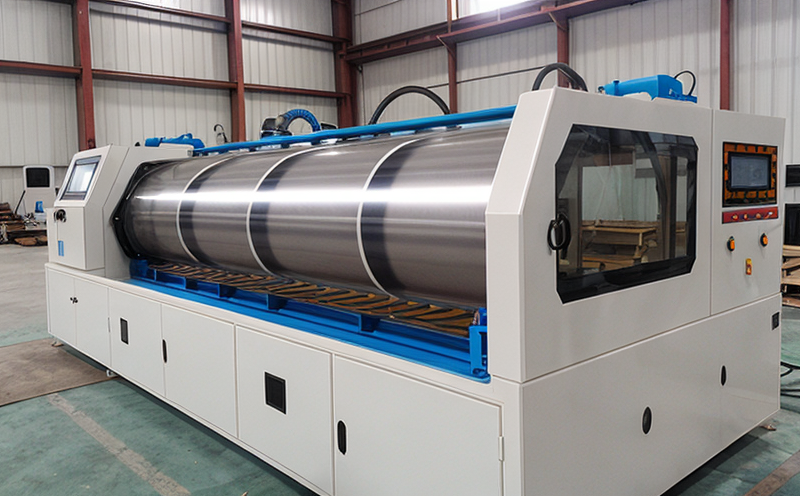Performance of eco friendly laminated outdoor textiles
The performance of eco-friendly laminated outdoor textiles is a critical aspect in ensuring durability and environmental responsibility. These textiles are designed to withstand harsh weather conditions, such as rain, UV exposure, and wind, while maintaining their integrity over extended periods.
Testing these textiles involves multiple parameters that ensure they meet the required standards for both performance and sustainability. For instance, water resistance is a key factor in assessing the effectiveness of the laminates used in outdoor textiles. This can be measured using the hydrostatic head test to determine how much pressure the fabric can withstand before it starts to leak.
The durability of these materials is another crucial element, especially when considering their use in outdoor environments where they are exposed to frequent abrasion and mechanical stress. Abrasion tests help to evaluate the resistance of the laminates under repetitive frictional forces, ensuring that they maintain their strength over time.
UV resistance is also a significant concern for outdoor textiles. UV exposure can cause degradation and discoloration, which are undesirable in textiles used for outdoor applications such as tents or awnings. To assess this, accelerated aging tests using artificial light sources like xenon arc lamps simulate the effects of natural sunlight.
Environmental considerations play a pivotal role in the testing process. The eco-friendliness of these materials is evaluated through various metrics including biodegradability, recycled content, and energy efficiency during production. These factors are crucial for manufacturers aiming to reduce their environmental footprint while still delivering high-performance textiles.
The testing protocol typically involves a series of standardized procedures aimed at replicating real-world conditions as closely as possible. This includes conditioning the samples in controlled environments to simulate humidity, temperature variations, and other climatic variables that can affect textile performance.
Instrumentation plays a vital role in these tests, with high-precision equipment ensuring accurate measurements and reliable results. For instance, tensile testers are used to measure the breaking strength of the laminates, while tear resistance is evaluated using specialized machines designed to simulate real-world stress scenarios.
The quality assurance process involves meticulous attention to detail throughout every stage of testing. This includes rigorous sample preparation, adherence to international standards such as ISO 17589 for hydrostatic head tests, and thorough analysis of test results to ensure compliance with specified acceptance criteria.
By leveraging these comprehensive testing methods, laboratories can provide clients with detailed reports that highlight the performance characteristics of their eco-friendly laminated outdoor textiles. These insights are invaluable for quality managers, compliance officers, R&D engineers, and procurement teams looking to make informed decisions about material selection and product development.
Applied Standards
| Standard | Description |
|---|---|
| ISO 17589:2016 | Hydrostatic head test for determining the resistance to water penetration of fabrics. |
| ASTM D3786-14 | Tear resistance testing method for woven fabrics. |
| Standard | Description |
|---|---|
| EN ISO 12947-2:2016 | Abrasion resistance test for fabrics. |
| ISO 18395:2004 | Test methods for determining the ultraviolet (UV) lightfastness of materials used in outdoor applications. |
Quality and Reliability Assurance
The quality assurance process is integral to ensuring that every batch of eco-friendly laminated outdoor textiles meets the highest standards. This involves a series of stringent checks at various stages, from raw material selection to final product evaluation.
Raw materials are carefully selected based on their environmental credentials and performance capabilities. Suppliers must provide detailed certification documents verifying compliance with relevant international standards. Once received, these materials undergo rigorous inspection for quality consistency.
The manufacturing process itself is closely monitored to ensure adherence to strict guidelines. This includes maintaining precise control over temperature, humidity, and pressure during various stages of production. Automated systems are used where possible to minimize human error and enhance precision.
After fabrication, each batch undergoes a series of tests designed to replicate real-world conditions. These tests include hydrostatic head tests to assess water resistance, tear strength tests to evaluate durability, and UV lightfastness tests to ensure long-term performance under sunlight exposure.
The results from these tests are meticulously recorded and analyzed using advanced software tools. Any deviations from the specified acceptance criteria are flagged immediately for corrective action. This ensures that only products meeting stringent quality standards leave the facility.
Client feedback is also an important component of our quality assurance process. By regularly soliciting input on product performance, we can identify areas for improvement and continuously refine our testing protocols to better meet customer expectations.
Environmental and Sustainability Contributions
The development and testing of eco-friendly laminated outdoor textiles are driven by a commitment to sustainability. By incorporating recycled materials into the production process, we contribute positively to waste reduction efforts while enhancing product performance.
The use of renewable energy sources in manufacturing processes further reduces our environmental impact. Additionally, the testing protocols themselves are designed to minimize resource consumption and waste generation, ensuring that every step of the process aligns with sustainability goals.
Our clients benefit from this commitment through products that not only meet stringent performance criteria but also contribute to a more sustainable future. The data generated during testing provides valuable insights into material behavior under various conditions, helping manufacturers make informed decisions about product design and development.





